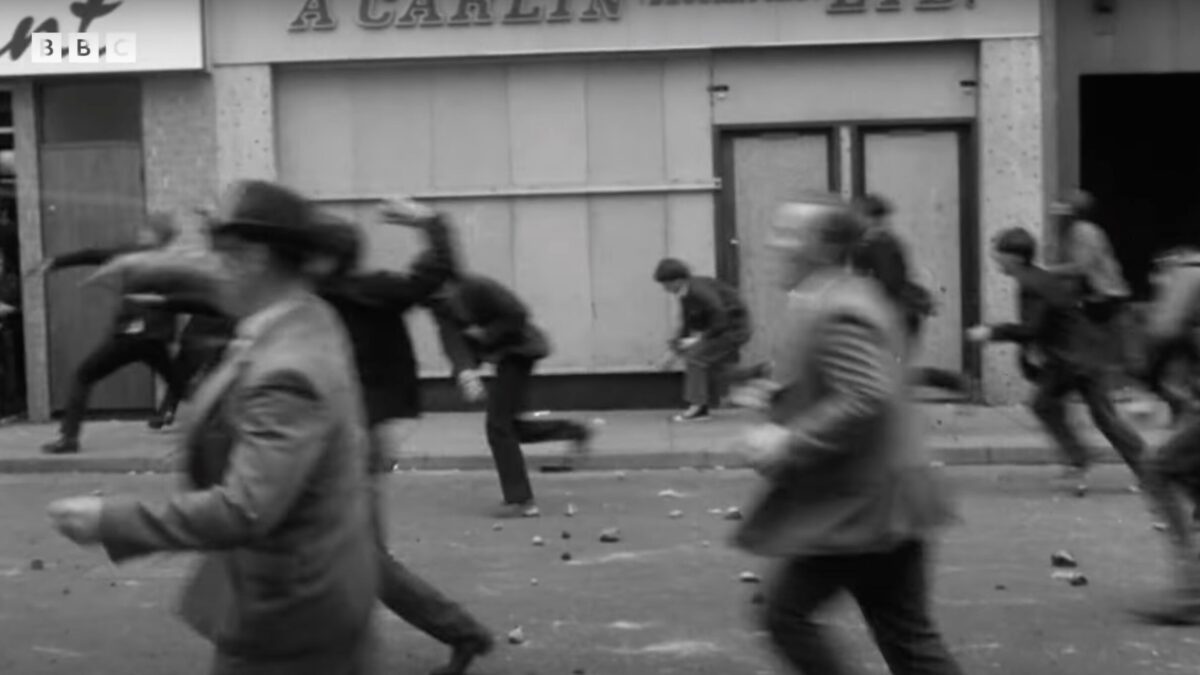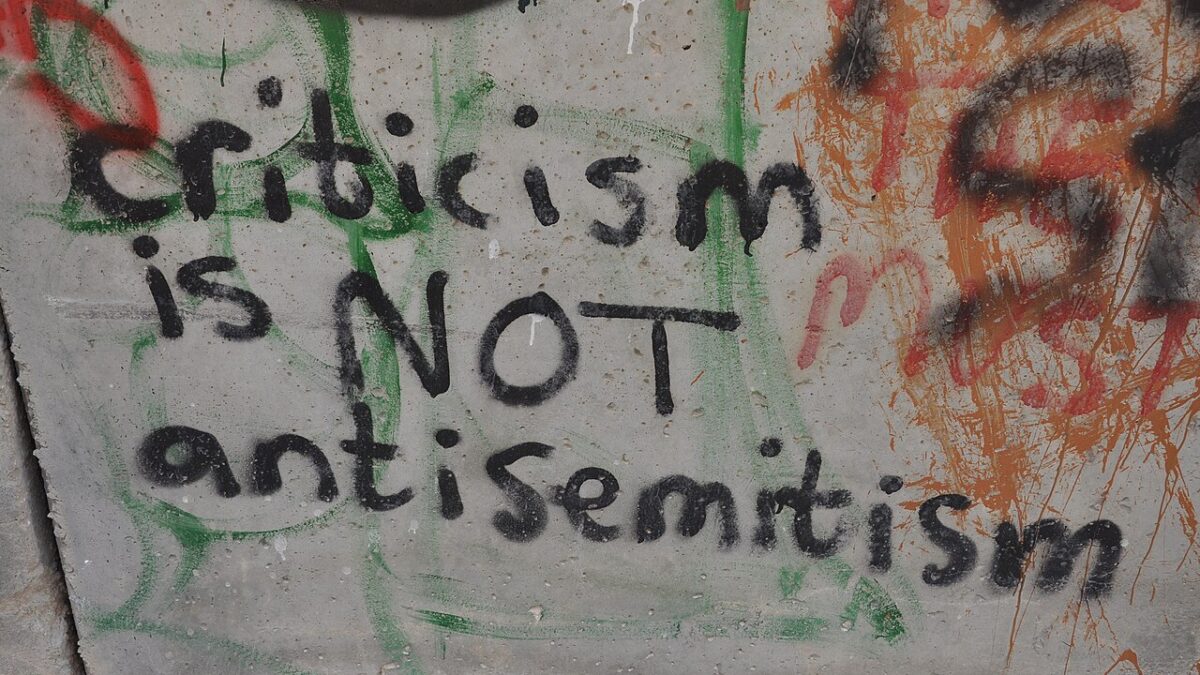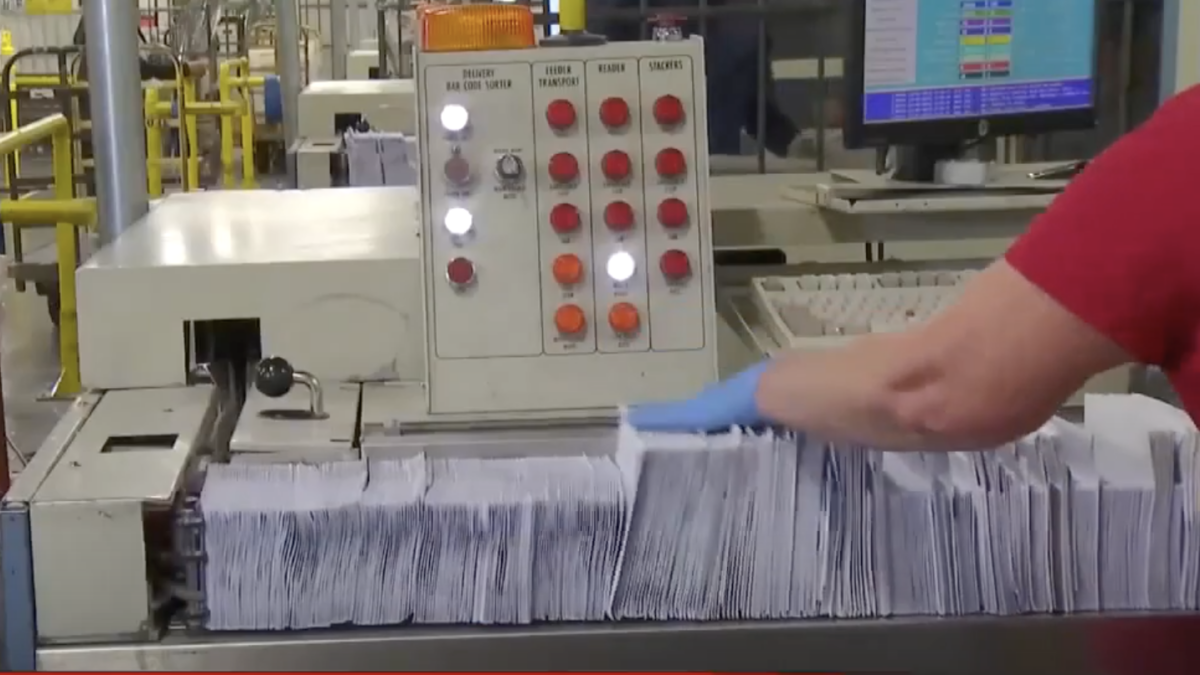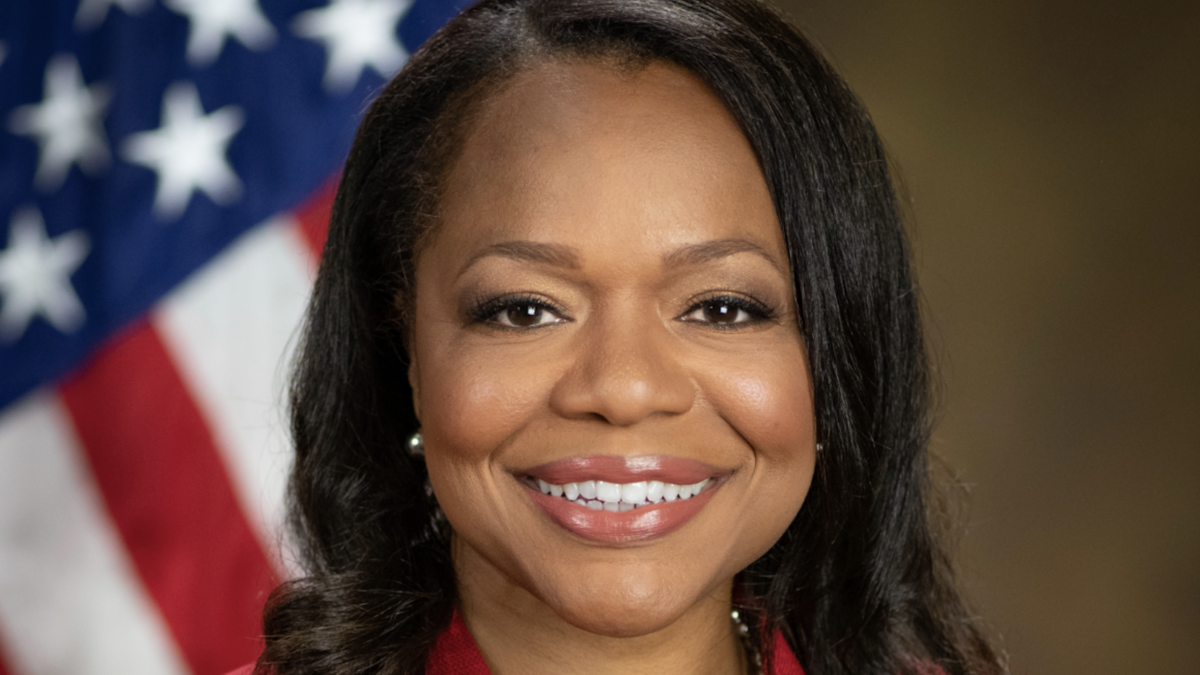Given the rise in political polarization in the United States, some pundits believe that the nation could be coming apart at the seams. A new documentary uses a recent example from overseas to demonstrate in vivid detail what that would entail.
“Once Upon a Time in Northern Ireland,” a five-part documentary released by the BBC this spring, gives an oral history of what euphemistically became known as “The Troubles” in the six counties that comprise Northern Ireland. The series, which is premiering in America on PBS, shows the deep and lasting scars that the slow-motion civil war had on generations of Ulster residents.
From Civil Rights to Civil War
The series’ first episode focuses on the roots of the conflict, between Protestant loyalists aligned with the British government in London and Catholics seeking to unite Northern Ireland (still a part of the United Kingdom) with the Republic of Ireland in Dublin. What began as a justifiable desire for political equality slowly descended a few steps short of madness.
At the root of “The Troubles” lay the electoral disparity within Northern Ireland. Because the voting franchise was restricted to landholders, and because a greater percentage of Protestants owned property than Catholics, the Republican faction comprised a permanent political minority. Looking to the American civil rights movement, the Catholic community launched their own civil rights push in Ireland, under the mantra of “One man, one vote.”
In one sense, American concerns over “rigged” political processes echo the protests of Catholics in Northern Ireland 50-60 years ago. But physical segregation between Protestant and Catholic communities — in many cases, neighborhoods were and still are separated by walls — led to much deeper divisions than experienced in the United States today. The fact that Catholic females were literally tarred and feathered for fraternizing with British soldiers — and that the Catholic community approved of such treatment — speaks to the hatred that physical separation can engender.
Physical divisions played a major role in the event viewed as the start of “The Troubles.” In the August 1969 “Battle of the Bogside” in Derry (or, as Protestants call it, Londonderry), several days of rioting overwhelmed the police. The Catholic community set up barriers to keep law enforcement out of “their” neighborhood, forcing the government in London to call in the British Army.
At the time, both sides thought the army would serve as a buffer to keep the Protestant and Catholic factions from killing each other. Republican and Loyalist alike welcomed the new troops with the most British of traditions, delivering tea and biscuits to the army soldiers.
But the British Army became viewed by Catholics as an occupying power, sparking a revival of the Provisional Irish Republican Army (IRA). Other paramilitaries developed on both the Catholic and Protestant sides of the divide, which fought over the three decades of “The Troubles.”
Thankfully, division within the United States holds few parallels to “The Troubles.” Despite the fixation of military leaders on woke politics, few view the average rank-and-file soldier as having an explicit Republican or Democratic bias. Likewise, one can scarcely imagine “Republican” or “Democratic” paramilitaries developing. And a good thing too, because the paramilitaries in Northern Ireland often operated more like the Mafia in the neighborhoods they controlled — “disappearing” people who were thought to have cooperated with the opposing side.
Scars Only Slightly Diminished with Time
The documentary allows viewers to get some semblance of daily life during a time of immense turmoil and violence. By relying almost exclusively on oral history interviews, with only an occasional news clip to provide historical context, the series vividly depicts the thoughts of individuals on both sides of the sectarian divide, along with attempts to end the polarization. In some cases, participants display their palpable regret for past offenses.
And many scenes show those offenses in horrific detail: Catholics’ belongings strewn about following a British Army search, and the army issuing statements implying the Catholics destroyed their own homes for propaganda purposes; IRA leaders committing suicide by hunger strike, starving themselves to death in an unsuccessful attempt to force the British government to treat them as political prisoners, and leaving behind wives and families; shooters attacking funerals; a cop gunned down leaving the hospital just after visiting his wife and newborn son; and the constant mental toll posed not just by bombings, but by all the security precautions put in place to prevent the bombings.
A Senseless Slaughter
Through most of the five hours of “Once Upon a Time in Northern Ireland,” a general feeling pervades: This is all so unnecessary.
The first episode featured a prescient quote from John Hume, pleading for order as violence began to spiral out of control. Hume — who ultimately shared the Nobel Peace Prize for his efforts to end a conflict that he tried to prevent — noted that the Catholic community’s demand for “one person, one vote” would prove of little value if citizens had little to vote for. Likewise, the Loyalist community retaining political control would amount to a pyrrhic victory if Ulster lay in waste.
It seems obvious that the problems plaguing Northern Ireland ultimately required a political solution. “The Troubles” didn’t involve a territorial dispute or the marauding activities of an invading army. When the “enemy” is one’s neighbor across the street, very little apart from a political settlement will solve the underlying causes of conflict.
Through much of “Once Upon a Time in Northern Ireland,” one may wonder at the absence of political leaders in the story — the British government in London, the Irish government in Dublin, and leaders within Northern Ireland themselves — and whether the violence could have abated sooner had elected officials moved more forcefully more quickly.
Even now, a quarter-century after the Good Friday Agreement, old scars still run deep. Some still find the legacy of “The Troubles” — which killed more than 3,500 and wounded more than 47,000, in an area with a current population of just fewer than 2 million — too difficult to “forgive and forget.”
But an end to the violence has prevented further scars, meaning that each successive generation can continue the process of healing.
“Once Upon a Time in Northern Ireland” will help that process, providing a cautionary tale for those in Ulster — and those well beyond it — warning against the folly of using violence to resolve political disputes.









